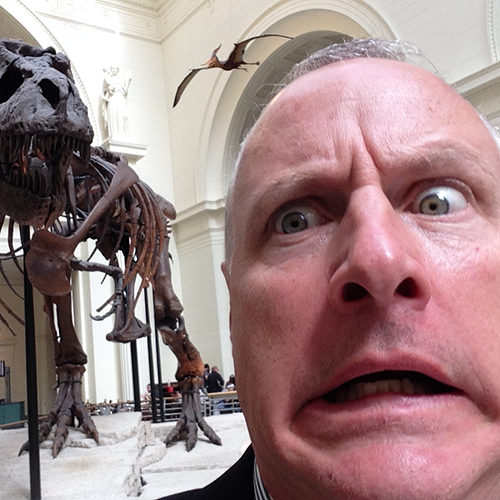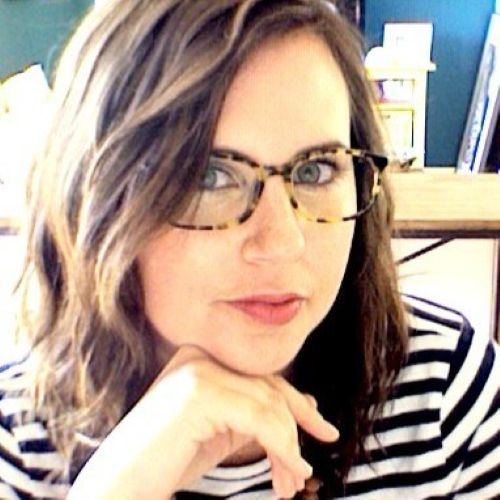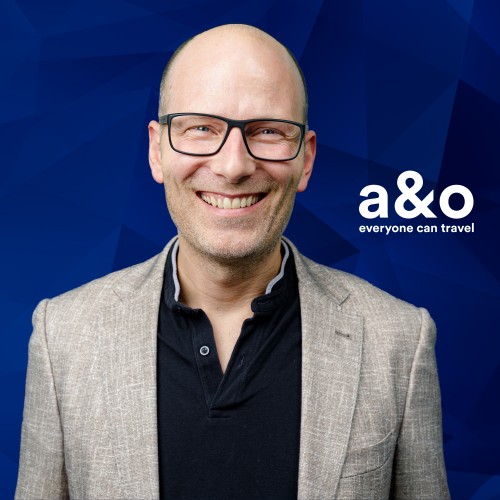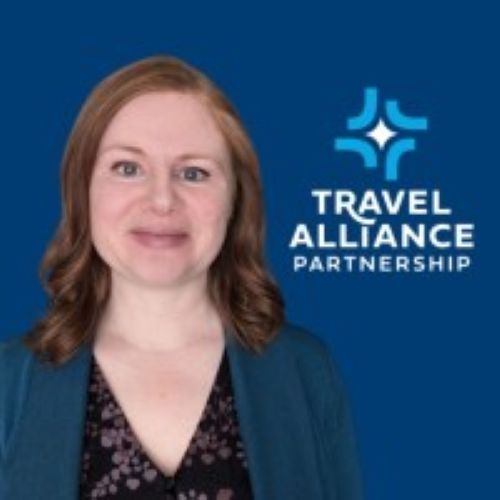Matt Stiker
Episode 73: Think like a Visitor, Plan like a Marketer, with Matt Stiker
Today’s episode is all about destination marketing, and we’re learning from a master craftsman.
Matt Stiker spent the first part of his career in advertising agencies running a wide range of accounts for highly creative and highly successful brands including ESPN, Coca-Cola, Microsoft Windows, and Xbox.
He also ran advertising and marketing for a diverse set of companies including adidas and HP.
Matt stepped into destination marketing ten years ago as the first-ever chief marketing officer for San Francisco Travel, formerly San Francisco Convention and Visitors Bureau. And then, the same role for attractions marketing company, CityPASS.
Now Matt runs his own marketing consultancy focused primarily on DMO’s and travel-related businesses.
More on Matt’s Background
Thank you for joining me, Matt.
You’re welcome. It’s so great to be here, Nicole.
I’m looking forward to our conversation today but before we get started, can you tell us a little bit about your story in your own words? I find that reading the bio is one thing but there’s usually so much more context to how you got to where you are.
Certainly, in my case, there’s a ton of context because my career spans the last 25 or so years. And I very deliberately pared back my bio because it even bores me after a while. I’ll give you sort of the short story. I actually grew up in a radio household. My dad was in the radio business. As a result, two things, really. Number one, media was all around me from the moment I became conscious of it. We were always watching commercials instead of running to the kitchen or the bathroom or skipping out for one reason or another. So commercials and advertising was always around me. And number two, I moved around quite frequently as a result. The business was very nomadic throughout the sixties, seventies, and even into the eighties. My dad was working two years one place, four years the next, three years, nine months here and there and as a result, I sort of got very accustomed to the idea of being in new places, seeing and meeting new people, et cetera, and really came to love that quite a bit. It fostered my very early love of travel.
As you and I mentioned, I grew up largely in and around New York State. I spent quite a bit of time in and around the Finger Lakes, primarily Skaneateles Lake. I spent a number of summers there and just absolutely loved that part of the country. As I advanced then through the early part of my life, I ultimately committed to the idea of being an advertising agency. I got my degree in journalism and advertising and started my career at an agency in Boston. A few years later, I found myself in Portland, Oregon working at an agency called Wieden and Kennedy where I got my first taste of destination marketing. One of the accounts that I was running was State of Oregon’s tourism account and it was an absolute blast. I absolutely loved my adopted state at that point and I loved my client, a guy by the name of Joe D’Alessandro, who as you’ll hear in the story, comes back later in my life. This was where I also met Todd Davidson whose current state director for Travel Oregon. Also, at that time, I was exploring a number of different accounts, some of them you mentioned, and was doing a lot more traveling as well.
I spent some time in India, spent some time in the Philippines, all for work. I spent some time in China. Again, it sort of fostered my love of travel. A couple of years later, a guy who had been a client of mine invited me to join him in Amsterdam, where I spent the next two and a half years working at Adidas as a global advertising director and again, fostered my absolute love of travel. All of this as a backdrop to a non-destination marketing professional experience but it was just growing inside me, this love of travel.
We moved back to the States after our son was born in Amsterdam. I lived in San Francisco for awhile, then in Seattle. I ran the state of Washington’s tourism account; again dabbling in that idea. I moved back to San Francisco, and worked for an agency here, ran Microsoft Windows, Windows Mobile, and X-Box. I then transitioned into a client-side role at HP and then reconnected with Joe D’Alessandro, who a year or two previously joined the San Francisco Convention and Visitors Bureau as it’s CEO. He invited me to become the first-ever chief marketing officer there, which I did. That really cemented my love of tourism, my love of destination marketing.
From there I made the shift over into CityPASS. I also was sworn in as a film commissioner for San Francisco by our former mayor Ed Lee, and over the course of the last couple of years I’ve been doing a variety of different consulting for a number of travel-related businesses whether it’s a DMO, former partner, former client of mine, a set of wineries that is struggling to bring visitors back after the fires this past fall, Pinterest even as they try to grow their travel business. A bunch of different things I have done sort of in and around the travel space allows me to bring a very balanced and broad perspective into travel. In other words, not just looking at what’s going on in the travel industry but having the ability to look outside and bring those tools, those resources, that experience in from outside the industry as well.
Other than that, I’m married. I have two high school-aged children. I’m a pretty avid mountain biker here in Marin County, the birthplace of mountain biking. I swam Alcatraz about a year and a half ago. So, it’s a pretty great life I have to say and I’m pretty happy sitting where I am right now.
Well, that’s awesome. I would agree with you and I can absolutely tell that you know, you’ve got a great life. I don’t want to make light of this actually, and I’m really happy and I think that’s really awesome. Because sometimes we don’t slow down long enough to say, “Wow I am blessed and this is awesome”.
Yeah, yeah.
So, this is why I love having my guests tell their own story because even though you might say, I think in the bio I read, you entered destination marketing ten years ago, but you went all the way back to growing up in a radio household and absolutely connected those dots from those early years all the way through to where you are now. I always find it so interested because our journeys might not go in that straight path. We have this idea that we’re going to get this job, we’re going to move here, we’re going to college for this degree and have this wonderful job, but yet our journey still kind of drives us back to what we’re passionate about, what we’re drawn to.
Absolutely.
Some of those early impressions in life do make such a huge, huge difference.
I’ve had the opportunity throughout the course of my career, talking to a lot of people coming into, or out of college into the world of business, whether it’s advertising or destination marketing or whatever it is. To your point, the expression I always use is that, “It’s a little bit like you have a puzzle in front of you but you don’t have the box top. You have no idea what the picture ultimately looks like, so you’re just trying different pieces.” You’re absolutely right, your passion will largely guide what that picture ultimately looks like.
Yeah, that’s a great metaphor. That’s a really good way to illustrate it because it’s absolutely true. It is a puzzle and you don’t know actually what it’s going to look like.
Exactly right. I would never have been able to predict 25 years ago that this is where I would be sitting today, and I couldn’t be happier about it. But it was completely unknown to me. No way to imagine what this could have been.
How to Stand Out From the Crowd
Well, I can’t wait to dive into these questions with you because I’m sure you’re going to bring such good, not just insight, but also all of these experiences that are driving your knowledge and the broad view you have for our industry.
So, let’s dive right into the first area that we like to focus on which is creativity and thinking about how competitive the tourism and hospitality industry is.
What kind of things have you done to stand out from the crowd?
There are a number of different ways that I have found over the years to look at the competition. One of the healthiest ways for me, given the fact the reality is there are very few two-horse races in what we do. In other words, very much unlike a Pepsi or Coca-Cola of yesterday, where you know that one or the other was going to win, in destination marketing and tourism, it’s very rare that you have that kind of environment where you can go just simply head-to-head with your “competitor.” A very healthy way that I found to look at it a number of years ago was, “Don’t think about your competition. Think about the enemy.”
The enemy is often not a competitor. The enemy often is something like apathy or lack of clarity about what it is that you offer. This goes for virtually any brand and virtually any industry. The idea that as a DMO, let’s just say, working at San Francisco Travel, my competition, as it were, wasn’t San Diego or LA or Orlando or New York City. My competition, my enemy rather, was the ability to communicate to somebody about why they should get to San Francisco now. That became the challenge. Not so much how to do I beat a competitor. How do I make sure that I find the right people that are aligned with San Francisco values and how to do I get them here? That becomes the real key to “competing.” Think about who is or what is, maybe more accurately, your enemy rather than the specific competitor.
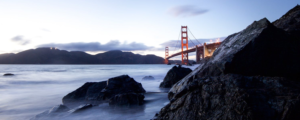
[bctt tweet=”“The enemy is often not a competitor. The enemy often is something like apathy or lack of clarity about what it is that you offer.” – @SFCMO #WhyCollaborate #podcast”]
That’s a great way to frame it up because you’re right. We don’t work in a Coke and Pepsi kind of environment. You really are trying to break through all of the noise, and it’s not just about differentiation necessarily. It’s about “what is that experience I’m going to have and how am I, as a traveler, going to value that experience over another one I might be considering?”
Yes. Exactly.
Most likely all the experiences are on my bucket list right?
Absolutely.
Achieving Clarity Through Personality
That’s a great framework. Can you give us some examples maybe some of the ways that you achieved that clarity for San Francisco?
Absolutely. Back in early days of social media, gosh it sounds like it was so long ago! It’s so funny but the evolution being so fast and so dramatic that it really does seem like a lifetime or a generation ago sometimes. Back in the early days, as we were starting to grow our Facebook presence, this is pre-Instagram, one of the things were doing, no surprise, most DMO’s do this, we were just highlighting some of the things you can see and do in San Francisco. Here’s what’s going on at Pier 39 this weekend. Here’s what’s going on in Union Square this coming Friday night, et cetera. Really just trying to leverage the content, although we were not calling it that necessarily, but leveraging those things that our partners and our members really wanted to promote.
At some point, it became very clear to me that all of the other destinations were doing the exact same thing. How were we going to move beyond that? I started to think about San Francisco not as a place, but as a personality. What would San Francisco, the personality, have to say about some of the things that were happening in the world? If I imagine San Francisco not as a city, not as a destination, but truly as a citizen of the world, then San Francisco would have a voice and San Francisco would have something to offer.
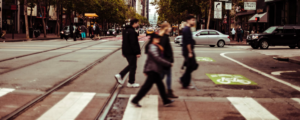
[bctt tweet=”“Think about your city not as a place, but as a personality. What would your city, the personality, have to say about things going on in the world?” – @SFCMO #podcast”]
I vividly remember the very first time we did this. Perhaps you remember when the 33 miners were trapped in Chile. I remember the moment that I heard on the news they had gotten back up to the surface. I called up the guy who was running the web and our social media at the time and I said, “I think we need to do a post just to say welcome back-.” And he asked, “What? Why exactly?” I said, “Because this is a moment for San Francisco to be able to make a comment about world events, and to be able to express a point of view about that.” I wanted the conversation to not be about, “We want you to come to San Francisco,” or-. “We want you to see what’s happening at AT&T Park,” or “Come see the Giant’s play!” It wasn’t about that. It was just about saying welcome back to the world.
That was the post that he ultimately made, “Welcome back to the world.” The response, Nicole, was unlike anything we had seen in any of our previous posts where all we were doing was posting about what was happening in San Francisco. All of a sudden people started to view us differently and so we started to post regularly what I was calling C.O.W. moments, “Citizen of The World” moments allowing San Francisco to have a voice.
One of the funniest ones was when Prince William got married and, Prince William or Prince Harry, whichever the older one was, I can never remember.
I think Harry is the one getting married next.
I think Harry is getting married to Meghan Markel, yes, I think you’re right. So, when Prince William got married, again I suggested we should have a comment about that. What the team came up with was basically, “Dear London, thanks for the invitation but we’re too busy this weekend. Too much going on here, Love San Francisco.” And the response, the global response to it, was just through the roof. The comments were hysterical, “I love San Francisco even more!” “This is so funny that you guys are doing this!” So, again it wasn’t about a specific thing going on here. It was us expressing a perspective and point of view about something that was going on in the world. It was a way for us really to create a relationship that went beyond San Francisco as a destination and more about San Francisco as a personality whose values you share. Who, therefore, you want to experience in a way that’s different from simply seeing that our hotels’ rooms are having a great sale this weekend or whatever it was.
I love that. So many thoughts rolling through my head as you’re describing that. You know my first thought is, this is definitely a way for you to cut through the noise and really stand out from the crowd. Exactly what we were talking about. But I can also imagine that you have to have the right environment to make that work, right?
Yes.
Especially in today’s world with such a fast news cycle and reacting to all kinds of events that could come out there. I imagine you have to react to the right types of events and then in the right tone and the right voice. Whatever that is.
You’re exactly right. One of the ways we tried to really manage that because your point is absolutely right. We knew we couldn’t do it with every single thing that was happening. It would really consume time and frankly, it would take away from some of the “business needs” we had which really are about posting activities, events, the things that are happening in San Francisco. It wasn’t an attempt to step away from those or to dismiss those as being unimportant. It was another layer of how we presented our personality. We just tried to manage those very, very carefully with a small team. It was almost our own mini editorial board, where somebody would suggest something, and if the rest of the group wasn’t feeling it, or we couldn’t land on something that felt really right, we would just decide not to do it. You’re absolutely right. It took the right environment and the right team culture in order to be able to do that well.
That’s a great point. I like the idea of the mini editorial board because that’s what news outlets do instead of having your social media manager, let’s say, be in charge of making those decisions. A decision of one.
Right, right.
This way, you’ll be able to test things. I can really see how valuable that would be and how important that is to be able to really pull this off the right way.
For sure. And it doesn’t take having a big team in order to create a small team. That was the other thing that was really great about it. In some small DMO’s you have a CEO who’s intimately connected to what’s going on in the marketing and when he or she is part of that editorial board, he or she really feels some ownership of it and really feels like they have a contribution to make. Often times then when you share and spread that ownership around it makes it feel even that much more valuable to everyone and you’re creating co-owners effectively.
Yeah, another great benefit of how this strategy and then how you execute it, absolutely.
Exactly.
Creating a Brand for a Destination
You know, as we’re talking, I want to ask you about something because we talked about San Francisco Travel formerly known as San Francisco Convention and Visitors Bureau. Were you there for the name change?
I was.
Can you talk a little bit about that and what that meant to the organization?
Absolutely. The timing of my arrival could not have been better. It had nothing to do with me and had everything to do with the fact that I joined in 2009 and in 2010 the organization was celebrating its 100th birthday. We’d been around a hundred years at that point in some form or another from the year 1906. As a result, we decided to take the proverbial giant step back and reevaluate everything that we were doing. Because from a performance standpoint everything was working, but we also knew that everything was changing. So we couldn’t rely on doing the same things the same way as we approached the next hundred years.
So we engaged with a consulting group called the Coraggio Group based out of Portland. They’re really terrific and the executive leadership team and then the entire organization got behind what was effectively a dramatically different new and strategic plan that included as part of it a reevaluation of the name, a reevaluation of the brand. I largely led that because as I was doing my own research and since I was coming in from the outside, I was realizing the word “bureau” largely reflects what had been. It was not reflective of present day and how people are looking for information. In fact, it’s the very antithesis of what they’re looking for. If you think “bureau” you automatically think bureaucratic. Information is flowing far more freely today than it ever has before.
The analysis we did was presented to our board. This was a year-long process. It started out with an assessment of the reasons to change the name before we actually changed the name. Are there enough reasons to change the name? We had a short list of what we thought those reasons could be. Then we looked at, as the next step, how do we evaluate what would be a great name? New York had, a few years prior, changed their name to NYC & Company, which we looked at and thought it was very, very innovative. But we also were concerned it was a step out of and away from the travel industry and we didn’t want to go that far.
We knew we wanted to stay within travel. We looked at a Google search that yielded, when you typed in “San Francisco travel,” or “travel San Francisco,” or “San Francisco visit,” or something that like, it yielded well over a million results. We knew we wanted to be THE source of information in those searches. We wanted to be where people got that information, and yet the San Francisco Convention and Visitors Bureau on just a purely perceptual basis didn’t necessarily set off the kind of, “I’ve got to go there” bells that we wanted and needed to set off when we were trying to connect with customers.
If you were a leisure visitors and you saw, “Convention Bureau” then you did not necessarily think this was something for you. We knew changing the name was at that point going to be really, really critical. We worked very closely with a local advertising agency and brand design firm called Eleven here in San Francisco to reframe what it was we called collectively our mission. I’ll read it to you. It’s fairly short but it became the manifesto of who we are and it led beautifully into the design of the new mark and the name.
It reads like this: “Why do people visit San Francisco? The sights and scenery, the one-of-a-kind events and world-class food. The welcoming people, the diversity and rich history. But, perhaps, more importantly, it has to do with the fact that no other city has adapted, combining disparate elements to create something new. Taking the familiar and marrying it to the unknown. Merging people’s expectations to moments of unpredictability. Uniting long-held notions with startling innovations. Clearly, the attraction of San Francisco is not any one thing but the combination of many different things. As an organization, we see the city in its entirety through the eyes of the people who live here, the people who love, and the people who love to come here. As proud as we are to help people to arrange their visits to San Francisco we see our mission in even broader scope. We believe our true value lies not just in our ability to sell our city in our role as curators of the most interesting 49 square miles on the planet. We are the San Francisco Travel Association and we are the window into the City by the Bay”.
What that manifesto set up if you look at the logo, the mark for San Francisco Travel, what you will see it effectively looks like a window frame. The point of me going into this exercise was not just simply to create the “San Francisco brand,” but to make sure that I was creating the San Francisco Travel brand. It is very, very easy in an age where you can get information about a destination from any place imaginable, at that time more than a million, now upwards of two million different resources when you type in the word “San Francisco travel.” In an age where you can get that kind of information, we wanted to make sure that people knew they had to come through us.
They had to come through the window into the City by the Bay. That led to the development of the mark. That then affirmed the way that we were thinking about our organization, not just our destination. Part of the backdrop of this was having spent quite a bit of time with a DMAI Future Study that was done in 2008. I was realizing that they were really talking about relevance and visibility and value being the three key things that a DMO had to look for. If you just set up your DMO to talk about your destination, you’re forgetting the fact that your organization is really, really a critical part of that. So I wrote a piece on LinkedIn, just a little while ago: “Branding your DMO? Don’t Forget About The O.” I want to make sure the organization understands its critical role in how we communicated about the destination.
Transforming the Visitor Experience
That’s great. You just gave us such an awesome roadmap to be thinking about a brand for a destination. I’m glad I ask you this question. Just to back up because I want to make sure that listeners were able to pull everything out of there.
First of all, it was interesting because as you were talking I was thinking, you know when you’re in the industry, I’m in New York State so I’m very familiar with NYC & Co. Of course, I know NYC & Co. as a DMO for New York City, but that’s because I’m in the industry. To take that back and think about it from my customers’ perspective is helpful. I think it’s great advice to step back and think about it from your customer’s standpoint.
I love that this was research driven, market-driven. You looked at the Google search but then this manifesto you came up with – to hear you read it, it’s pretty detailed. I’m certain that took quite a bit of time to come together.
It did. It absolutely did. I still get goosebumps reading it. That’s the funny thing about it. It literally, it’s been 10 years. I still get goosebumps.
The point is that you just described this whole process, and you didn’t get to the mark until the very end. For me, the big takeaway here is that all of that research, that homework, the work that you did on the mission informs what the brand is and makes that decision so much easier.
You are absolutely right. I can’t tell you how valuable it was to spend time with that DMAI Future Study. They have since really gone back and dug further into the value of DMO’s. I would definitely urge anyone of your listeners who are part of a DMO to dive into what Destinations International, (formerly DMAI) are doing on behalf of DMO’s. These pieces were sort of North Stars for me. Our board was made up of hoteliers and restaurateurs and folks who work and live at attractions and tour companies. They weren’t familiar with a lot of these things. So what I did reminds me of an old Gary Larson cartoon. Gary Larson did a brilliant cartoon a number of years ago which features two dinosaurs standing outside a 7-Eleven and smoking a cigarette. His caption was, “The real reason dinosaurs became extinct,” which I thought was so funny.
The way I talked about it then, with our board, was to say, “Look, fast forward a number of years. The dinosaurs died off because they were smoking. They didn’t have the Surgeon General’s warning on the pack in the Jurassic Ages. We now have a Surgeon General’s warning on the side of the pack which means were the dinosaurs alive today they wouldn’t have died.” Shift over into the DMO world and futures study that DMAI did. That’s our Surgeon General’s warning. That should be a wake-up call to everybody in this industry. “If you’re not focused on your relevance, on your visibility, and on your value you are missing an opportunity and could very well go the way of the dinosaurs.”
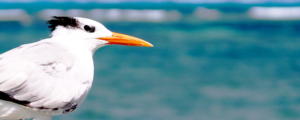
[bctt tweet=”“If you’re not focused on your relevance, on your visibility and on your value, you are missing an opportunity and could very well go the way of the dinosaurs.” – @SFCMO #WhyCollaborate #podcast”]
Yeah, I totally agree. Great advice and I think that really ties in to a point you were making about, “Don’t Forget The O,” right? How the organization fits into the fabric of the industry.
Yes. The analysis we did of other brands within the travel space largely left us feeling like they were dramatically highlighting the destination and dramatically downplaying the role of the organization. You would have a big destination name but tiny little organization name sort of tucked in underneath it, almost as an afterthought.
I definitely get why a lot of destinations would ultimately default to that because they do really feel their role is about selling a destination. I really do understand that, and yet again if you’re not aligning your organization with that, then frankly they could find out about your destination in any number of hundreds of thousands if not millions of ways. You want to make sure you’re putting yourself at the top of that list.
Just to tie that to the mission that you read – you started with, “We have these great events, we have this world-class dining, we have all of these assets,” and then you ended with, “We’re the curators of these experiences, we also see the city for everything that it is. We know the people who live here.” You went a lot deeper into areas that when you’re thinking about destination marketing you might not ever really connect the dots.
Yes, exactly right.
That’s great. I want to switch gears just slightly. That was a fantastic conversation. One of the other things I’d really like to explore is the creative solutions that come from facing a challenge or some sort of adversity. I think some of us do our best work when we’re faced with a problem that we’re really trying to solve.
I’m wondering if you can describe for us a time when you’ve faced some sort of a challenge and then maybe take us down, what was the creative solution that came from that?
I’ll stay with the experience with San Francisco Travel because I think it offers a lot of value to a lot of the DMO listeners, and also because the time I spent there was really, really rich in terms of some of the things we were able to do.
About a year after I arrived, the guy who had been running the visitor information center left the organization. He was a great guy. He just wanted to pursue other things. I was very intrigued to take it over and bring it under the umbrella of being one of the marketing tools of the organization. But I was also very aware of the fact that it was in a horrible location. Over time it had largely become simply a library of brochures with the “librarians,” the staff and volunteers who worked there, sort of pushed into the back of the space. It also was losing money. It wasn’t losing a ton of money, but it certainly was not paying for itself. I stepped into that to see what we could do about turning that around.
We did some research about who was going into the visitor information center. One of the very interesting things we found out right away – there were a lot more people visiting it than we expected. That visitor count, number one, became really, really important. The second thing, the really interesting insight, was there were a number of people who were arriving at that visitor information center who had not figured out specifically what they were going to be doing in San Francisco. In many cases, they hadn’t even booked a hotel room. They were literally taking our public transit in from the airport and being dropped off right outside the visitor information center and rolling their luggage in saying, “We’re here. What should we do?” They were checking out the brochures and what we had provided in terms of collateral material, but I felt this was not an optimal experience for them and certainly it wasn’t showing off our best.
We developed a sort of multi-pronged strategy to reimagine and transform the visitor information center. The challenges were clear. The way that we solved them was first of all, basically a complete redesign where we gutted the interior. We pushed all the brochures from the center of the room to the exterior walls of the center. We brought the people who had been designated librarians from the back of the room into the center of the room. We essentially reoriented the way they thought about themselves.
Think about companies like Starbucks. They did a brilliant job of rebranding their workers from people who pour the coffee to baristas. You just get a different perception of who they are as a result of it. If you think about Disney theme parks, people who work there are not theme park workers, they’re cast members. Again, you’ve got a different perception of yourself when you frame yourself up as, “I am part of a cast,” rather than, “I just work at the park”.
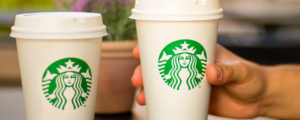
[bctt tweet=”“Starbucks did a brilliant job of rebranding their workers from people who pour the coffee to baristas. You just get a different perception of who they are as a result of it. ” – @SFCMO #podcast”]
Finally, if you think about what Apple has done with the Apple Stores, those people are not computer technicians. They’re Geniuses, right? So the idea that these folks who really do know the city of San Francisco inside and out better than anyone, should be reframed in their own mind – “Geniuses” just became a natural thing. All of a sudden when you frame the people who work there differently, and you give them a different perspective on what they do, they show up differently as well. That was the first thing. How do you make sure you are pushing the brochures to the outside? You’re not getting rid of the brochures because the brochures are still really, really important to a lot of people, but you’re relegating them to a more appropriate space within the center, and bring the really important thing – which was our Geniuses – to the center, so that was number one.
Number two, technology. San Francisco is obviously an epicenter of technology so how do you introduce technology in a way that feels appropriate, that feels welcoming and does not feel off-putting or scary? So, we did that with a number of touchscreen monitors and other monitors around the center, knowing that we would then evolve further as we went on. This was part of a larger strategy which was about the total visitor experience, not just the visitor center.
The third piece, I was really, really happy with. Really, really proud of in terms of generating dollars. There are ways that centers can do that, and we were at the time selling movie tickets and passes, and selling some of the other attraction passes including CityPASS and some others. That was really the only way we had to generate any revenue. I thought it would be really interesting to introduce a line of merchandise. I went to the leadership team, some of the folks had been there for 20-25 years and were told, “Yeah we tried that before, it didn’t work.” That’s always a phrase I love to hear because it allows me to be the new guy in the room and say, “Oh really? What did you try?” Well, it turns out, Nicole, that they were, I kind of laugh when I think about this, they were trying to sell t-shirts and hats that were branded “San Francisco Convention and Visitors Bureau”. When I heard that I couldn’t help but laugh and say, “It’s kind of no wonder it didn’t work, right?”
I reached out to an organization here called SF Made, a trade organization focused exclusively on bringing together and advocating for companies that still manufacture their products here in San Francisco. It’s everything from TCHO Chocolates, this tiny little cool chocolate company, all the way up to the McRoskey Mattress Factory who’ve been making mattresses for San Francisco for dozens, if not hundred or so years. I went on the SF Made website, met with their executive director, and we curated a list of products that we thought would be appropriate for visitors. They obviously couldn’t be too expensive because people weren’t coming in there to drop hundreds and hundreds of dollars. They had to be something that people could travel with easily, so the idea that a gigantic glass vase didn’t make any sense. It had to be something that would really make an appropriate gift for someone back home or something the visitor could utilize or consume while they were traveling.
Those were some of the criteria that we used. So, we curated a small selection of SF Made products and just introduced them in a pop-up shop within the center. The mayor came down to basically launch the SF Made Store. He saw it as a perfect combination of the visitor industry, and the small business manufacturing industry in San Francisco. So we got some extra leverage and some extra bump there. For me the whole point was, while I was looking for a revenue bump, I was actually much more interested in the fact that we were making an investment in marketing the city of San Francisco as a destination. Because I knew what would happen is that people would get home, and they would share these gifts, these souvenirs, with their friends, family, or colleagues and there would be a story they could tell about the destination.
I said to the team that ultimately created the list of products, “I don’t want any shot glasses. I don’t want any key chains. I don’t want any bumper stickers. I don’t want anything that people could find in any tacky tourist shop that litter all of our destinations. I want things that will help tell a story about the destination.” That ultimately became the SF Made Store within the San Francisco Travel Visitor Information Center, and it became a really great mini success story within a much larger success story. That’s how we sort of addressed and tackled this challenge of what do you do with a visitor information center.
That’s awesome. So many destinations are struggling with the information centers and reimagining them as all kinds of things. This kind of formula that you spelled out that worked for San Francisco is a really good, and I think repeatable kind of strategy as to how you might do it.
I’ve got to ask you though, and I apologize if I missed it, but you talked about reframing the staff differently, and we talked about the different names. What was the name or how did you frame up the staff?
San Francisco Geniuses. We tried to come up with a different name because we didn’t want to totally steal Apple’s idea. But that idea just became so important to help them rethink about themselves and make the mental shift from being a librarian to being a genius. You could almost tell that they showed up differently at work.
Absolutely. That makes total sense because the reason why they’re there is because they know the city better than anyone else.
Yes, exactly.
They are there to be helpful.
Then this whole idea of the SF Made products. I love that in a couple of different ways. One is it was solving a problem because it was creating some new revenue streams to help support the center. We all need to do that if we’re in the information center business, but also to take that and understand how what you were doing there with those products was actually extending your marketing message. To me, it’s kind of helping with that repeat visitation, because they’re going to take those things home.
Absolutely it is. Exactly.
Then, that the mayor recognizes the opportunity to see the connection with small business within the city. I think that’s just really tremendous. That’s a great example.
That was an unexpected bonus. I hadn’t realized when I entered into the conversation with the executive director of SF Made, how connected they were as an organization with the city and with the city’s economic development group. As a result, as soon as we did this, as soon as a conversation went from us to the mayor’s office, the mayor looked at it as being this tremendous opportunity to align these two great industries together. He was thrilled to come down and spoke some really, really wonderful words. As a result, we obviously got some press out of it and all that. It was pretty great.
Cooperation with CityPASS
That’s awesome. That’s a great example. That is actually a perfect segue way into the next thing I’d like to talk about which is collaboration. That certainly is a good example of the kind of collaboration that needed to happen between SF Made and of course, yourself, in Travel San Francisco. But I’d like to talk about what I like to call “Co-opetition” which is where perceived competitors come together and collaborate on something that they really couldn’t accomplish on their own.
I’m wondering if you have any examples of when something of that nature like “Co-opetition” has worked for you?
I do. CityPASS is probably the best example of this. For those who don’t know, CityPASS is an attractions marketing program between 12 of the Top Cities in North America – so 11 of them are in the US and then Toronto. CityPASS brings together the most highly visited attractions in each one of the destinations and puts them together into one ticket. If you are a first-time visitor, let’s say to New York City, and you know that you’re going to want to see the Empire State Building or the American Museum of Natural History and the Statue of Liberty and the Guggenheim Museum, etc. If you buy a CityPASS, you got between 40 and 50 percent off your admission to all of those different attractions.
The benefit ultimately to the attractions is the fact that there is a tremendous amount of collective marketing weight that goes behind CityPASS. If you are the Empire State Building you know you can do a certain number of things over the course of a year, but there are always sacrifices or compromises. There are always things that you can’t necessarily do. One of the biggest challenges for an attraction is making sure the budget extends far. CityPASS helps with the visitor pre-trip.
That pre-trip visitor is really, really critical. Because once people get into the city like New York, San Francisco, Tampa, Seattle, etc., they might have a couple of things that they want to do but the weather can preclude it. How they’re feeling on any particular day, having a sick kid can preclude it. There are any number of things that would actually preclude them from going out and not only enjoying the attractions but actually spending the dollars to buy the ticket.
The pre-trip confirmation – knowing that somebody will be coming to your attraction – became a really huge part of the way that the CityPASS business grew. It was really, really critical to have some level of commitment the visitor was going to be making in order to visit some of these attractions. CityPASS took advantage of the fact that all of these attractions, once you’re in the market, they all compete with one another, but if you’re outside the market, you haven’t yet traveled. CityPASS can take what you provide and then amplify it through our own marketing efforts in order to more likely guarantee that somebody would visit some of the attractions that are represented within it.
Frankly, to some extent, it prevents people from going to attractions that are not in it. So, in other words, if you buy a CityPASS before you travel over to Seattle, you are far more likely to visit those CityPASS attractions because you’ve already bought the ticket than you are to visit any attractions that are not a part of CityPASS if that makes sense.
Yeah, absolutely. I think that’s a great example, especially finding the common challenge with these attractions. So these attractions might be competing like you had explained, but this whole idea of the pre-trip confirmation. Getting them to pre-plan and pre-book. It’s easier to do when you are all together in one pass.
Exactly right.
I think that’s a fabulous example. When I was thinking about CityPASS, I’m pretty sure I bought one when I was in San Diego. Is that one of the cities that they’re in?
There is a Southern California one. If you did just San Diego you probably purchased what is a Go Card or a Smart Destinations product.
Okay, gotcha.
It is just for San Diego but a similar product.
Right, because one of the things we struggle with in Upstate New York, where many of my clients are, is being able to have that saleable product. Especially when they are targeting international travelers. Some smaller attractions really struggle to be able to be in that pre-trip considerations set. I can really see how a CityPASS can answer that challenge for folks.
Absolutely right. The challenge in some cases, because not all attractions are created equal – some are bigger than others, some have more visitors than others – the challenge was always to ensure that the collective group felt that the rising tide benefited them all.
In other words, while the financial model could favor those that brought more visitors more than those that brought fewer visitors, the reality was everyone benefited by the fact they were part of the program. At some point, it became up to them to be sure that they were really delivering a great product experience. So they were also doing their own marketing and that ultimately was going to pull people to them within the program, as opposed to just the big attractions. In Tampa for example, Busch Gardens Tampa is far and away the biggest in terms of visitors relative to all of the others. Yet, all of the others as part of the program benefited from the fact that Busch Gardens Tampa was in it in the same way as everyone else.
That’s really great, that’s a great example.
Exciting Projects and Ways to Contact Matt
Well, Matt, I knew this would be an awesome conversation and I want to be cognizant of your time and our listener’s time so we do need to wrap up. Before we do I’d like to give you an opportunity to talk about any exciting projects that you’re working on now or even your current business and kind of give us an update on what is Matt up to.
Well, thank you very much. I really appreciate the opportunity to talk with you today. I hope you can tell that I get really enthusiastic when I talk about some of these programs and projects that I worked on just because, for the most part, they were really fun to work on. It’s such a fun industry anyway and then if you can bring some creativity to it often times it can quickly get you out of the mindset of just doing the same old thing that everybody else does.

[bctt tweet=”“If you can bring creativity to your industry, it can get you out of the mindset of doing the same old thing that everybody else does.” – @SFCMO #WhyCollaborate #podcast”]
In terms of current projects, there’s a real range of things. I think I mentioned earlier that I just finished developing a marketing plan for Vintage Wine Estates. I’ve visited the wineries in Napa and Sonoma. We’re getting ready to see how that’s going to roll out in order to invite people back to the wineries after the perception that Napa and Sonoma burned to the ground. They did not, by the way. There are more than 600 wineries between two counties and only a handful were really impacted by the fire. There are a significant number that not only remains standing but are in full production. That’s one thing that’s current.
I’m doing a couple of projects right now for my friends up at Visit Seattle and really enjoy not just pure marketing projects but opportunities for me to engage in different ways. Sometimes that’s an organizational restructuring in the case of one of the projects that I’m working on right now. It includes developing the best practices about DMO and port relationships – airport and cruise ports – so there’s a number of things going on right now that I’m sort of digging into and just really enjoying.
I would just say if anybody is interested in learning any more about some of what I’ve done, I’ve written quite a bit up on my LinkedIn profile and they’re more than welcome to check some of that out. I mentioned earlier, the “Don’t Forget The O,” when you’re branding your DMO, and I’ve written a couple of others that are very specifically geared toward DMO’s some people might find helpful. Other than that, this has just been really great for me and I really appreciate you reaching out.
Well, that’s awesome. We will make sure in the show notes we link to your LinkedIn profile and also that article that you mentioned, “Don’t Forget the O.”
It has been a real pleasure. I’ve really enjoyed talking to you and I think we can probably talk for another hour but we may have to have you on the show again so we can explore some other topics.
I’d be happy to. Remind me next time, I’ll tell you about Cold Stone Creamery and HP.
Oh, great, I would love to learn about that. Actually, didn’t you have a recent post on LinkedIn about Cold Stone Creamery?
I did. You’re absolutely right, you’ve seen that one.
I saw that one so, we’ll look forward to exploring that. We’ll definitely have to get you back on for an encore episode. I want to again say thank you very much for spending your time with us today.
Thank you, Nicole. I really appreciate it. It was great.
Connect with Matt:
- LinkedIn: https://www.linkedin.com/in/mattstiker/
- LinkedIn Article: https://www.linkedin.com/pulse/when-branding-your-dmo-dont-forget-o-matt-stiker/
We value your thoughts and feedback and would love to hear from you. Leave us a review on your favorite streaming platform to let us know what you want to hear more of. Here is a quick tutorial on how to leave us a rating and review on iTunes!
